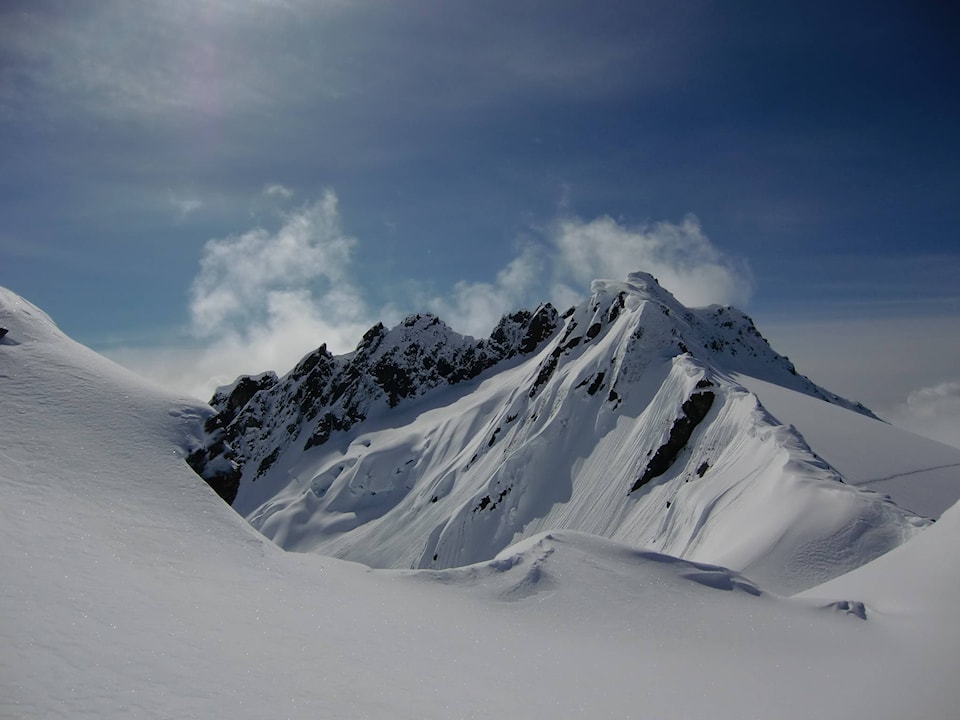By Eileen Delehanty Pearkes
Snow may be lingering in the valleys longer than usual, but the Nelson Star’s recent story about snowfall levels being at 90 per cent of normal in our region is a reminder that the eye can deceive us. Length of winter and severity of cold do not equal a deep snowpack. Snow levels matter a lot to our ecosystem, and to the formation of hydropower.
Every two weeks, a report on reservoir conditions produced by BC Hydro lands in my inbox. BC Hydro monitors snowfall accumulations across the Canadian portion of the Columbia Basin, and works with U.S. counterparts to develop a river volume prediction for the spring melt across the entire system, so that they have a general idea of how much room will be needed in the reservoirs. This year, they predict outflow to the Pacific at 88 per cent of normal, just a few percentage points off the B.C. River Forecast Centre’s snowfall measurement.
Some readers might be sick enough of snow to have stopped reading at this point. But snow is an essential part of the Columbia River’s power, and of the treaty. The Columbia has long been classified as a “snow-charged” system, with high spring flows, especially from our mountainous upper watershed, a gush that hydro engineers wanted to capture, hence the 1961 Columbia River Treaty, and our region’s large-scale reservoirs.
Climate change projections for the international basin through to 2080 highlight the white wealth in our mountains. While most portions of the trans-boundary basin are predicted to grow warmer and drier in the coming decades, the Canadian portion will shift to longer shoulder seasons (more rain), but continue to accumulate snow, especially up high. Canada will provide lots of melting snow to the system. This is important.
At the time the treaty was signed, Canada’s contribution of water by volume was about 35 per cent. As the climate has warmed and snow accumulations have decreased south of the border, Canada’s share has climbed to an average of 40 per cent. In years of severe drought, it hits 50 per cent. Said another way: only 15 per cent of the entire watershed can provide half of the international river’s volume in today’s world.
The fifth round of international negotiations between the U.S. and Canada were completed at the end of February. These negotiations are private, with very little detailed information about the discussions reaching the general public. It’s a complex system, government representatives have explained. It’s going to take some time. The inner circle is made up of hydropower and flood control representatives (BC Hydro; U.S. Army Corps of Engineers; Bonneville Power Administration); government representatives; diplomats; and hydropower technicians.
We have no way of knowing what’s actually going on behind those doors, though we can make educated guesses. In my own study of the system over the past decade, and with my ear to the ground at conferences and public meetings, it seems like Canada holds some high value cards. Snow accumulation in a warming world is only one of them.
A column on the riches of water would not be complete without at least a brief mention of Minister Michelle Mungall’s recent op-ed piece on independent power producers (IPPs).
It appears the NDP government has straightened out the hydropower industry by eliminating the unfair incentives for the IPP projects. My study of treaty history has taught me a lot about corporate use of water. While I would like to believe that Mungall and others have worked out a way for “all of us [to] benefit from our public utility and our natural resources,” her comment rushes right past a remaining unfairness in the corporate water system. This unfairness may continue if Site C goes ahead. It could also be addressed with changes to the treaty, and with new policies for IPPS that support local accountability.
While this region where we live produces 50 per cent of power consumed in the province, we receive next to nothing back, i.e., a direct, annual share of the profits from hydropower that could repair some of the damage. The next-to-nothing we receive here does not make up for the permanent losses from dam construction, forced displacement of farmers and ranchers, and a starved aquatic ecosystem.
IPPs implemented with the preservation of local people and landscapes at the forefront of policy can keep water and its economic advantages close to home. I hope the government will find a different way to support IPPs with that in mind.
One thing for certain: the value of water has certainly not decreased over time.
Eileen Delehanty Pearkes is the author of A River Captured: the Columbia River Treaty and Catastrophic Change. To receive BC Hydro’s bi-weekly reports on reservoir operations, contact Mary Anne Coules at 250-365-4565 or maryanne.coules@bchydro.com.
